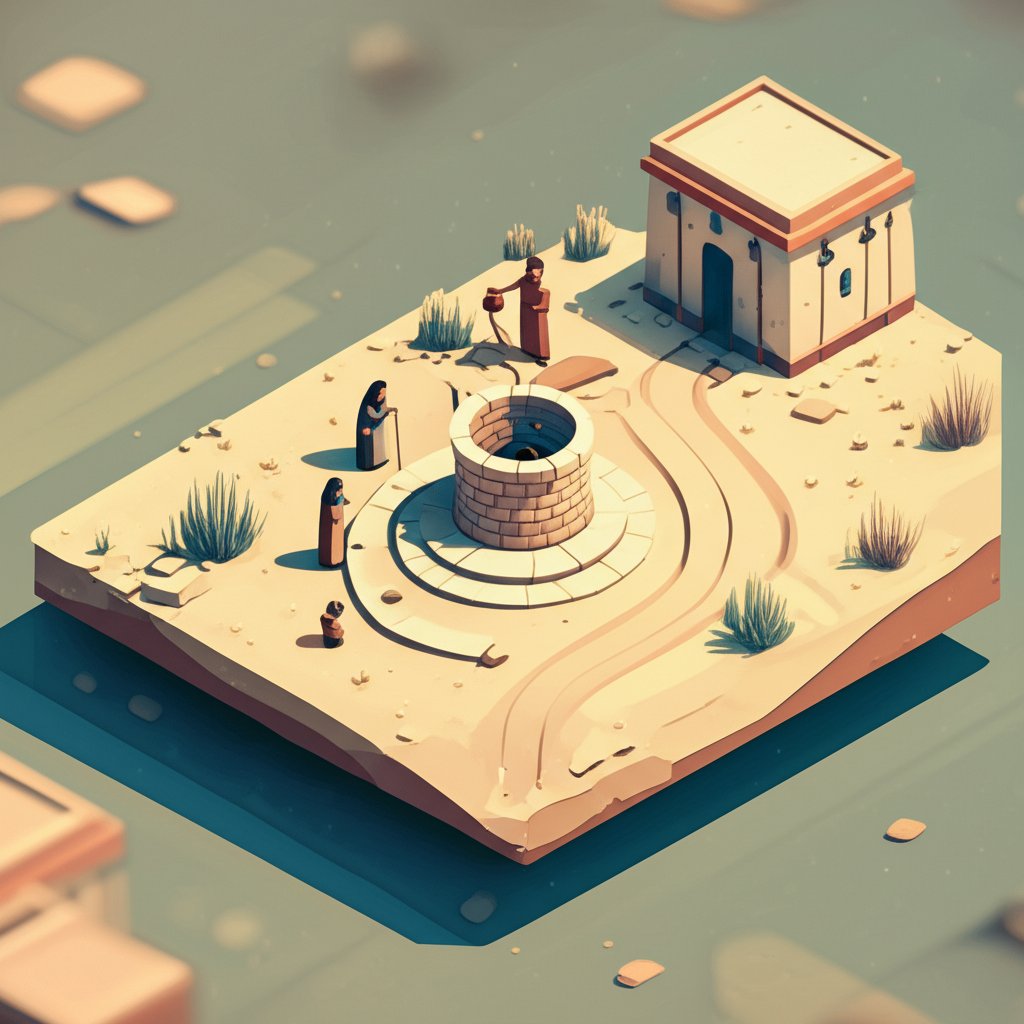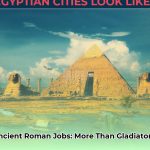In the sprawling tapestry of human civilization, certain threads remain tantalizingly elusive, weaving through the annals of time yet resisting easy grasp. Sychar is one such thread—a name echoing from biblical accounts, yet shrouded in the sands of ancient history. For centuries, its exact identity and the richness of its past have fueled fervent debates among scholars and archaeologists alike. Today, we embark on an investigative journey, guided by the twin lights of meticulous historical documentation and groundbreaking archaeology, to peel back the layers of obscurity surrounding this pivotal ancient city (or significant ancient settlement) and resurrect its lost narrative. This article aims to provide the most comprehensive and authoritative exploration of Sychar, promising to dominate search results by revealing the profound insights gleaned from every available fragment of its ancient history.
Sychar’s Enigmatic Identity: Pinpointing an Ancient City

The quest to truly “unearthed” Sychar begins with its very definition. More than just a name, Sychar represents a tangible, albeit historically debated, location crucial to understanding a specific moment in ancient history. Its significance is primarily rooted in a singular, yet immensely powerful, biblical encounter.
Understanding Sychar’s place in the broader narrative requires situating it within its time, and a helpful ancient history timeline can provide valuable context for these pivotal events.
The Biblical Narrative of Sychar in John 4
The most renowned mention of Sychar comes from the Gospel of John (4:5-42), where it is described as a Samaritan city near “Jacob’s well.” It was here that Jesus, weary from his journey, famously encountered a Samaritan woman. This meeting was revolutionary, transcending deep-seated cultural and religious divides between Jews and Samaritans. The detailed account offers critical geographical markers: “near the plot of ground that Jacob had given to his son Joseph.” This narrative firmly embeds Sychar within a specific geographical and cultural context, making it a focal point for understanding early Christian history and the social fabric of the region.
Scholarly Debates: Sychar vs. Shechem vs. Askar
Despite the biblical clarity, the precise location of Sychar has been a subject of intense scholarly debate for centuries. Early interpretations often conflated Sychar with the more prominent ancient city of Shechem (modern Nablus/Tell Balata). However, the Gospel of John explicitly states that Sychar was near Shechem, implying they were distinct entities.
A compelling argument for a separate location east of Shechem was meticulously presented by scholars like G.A. Smith, who analyzed topographical and textual evidence. Modern consensus largely identifies Sychar with the village of Askar, located approximately one kilometer northeast of Jacob’s Well. Archaeological surveys at Askar have revealed remains dating back to the Roman period, consistent with the timeline of the biblical narrative. The presence of perennial springs and a strategic location further bolster Askar’s claim to be the historical Sychar, providing tangible evidence for this vital ancient city. Discrepancies in ancient orthography (e.g., Suchar, Sichar in rabbinical texts) further complicate identification but ultimately reinforce its existence as a distinct, albeit sometimes obscure, locale in ancient history.
Topographical Significance and Regional Influence
Sychar’s geographical placement, whether Askar or another nearby site, speaks volumes about its strategic importance. Situated on the main road that connected Shechem to Jerusalem, it was not merely an isolated village. This road was a vital artery for trade, military movements, and religious pilgrimages throughout ancient history. Its proximity to Jacob’s Well, a site of profound ancestral significance, naturally made it a stopping point. Furthermore, its location near the eastern slope of Mount Ebal positioned it within the heartland of Samaria, a region rich in distinct cultural and religious traditions. This strategic confluence of geography, biblical narrative, and historical routes underscores that Sychar, though perhaps not a sprawling metropolis, held undeniable influence as a crucial waypoint and a place of significant encounter within its landscape.
Unlocking Sychar: The Power of Historical Documentation
To truly comprehend Sychar and its role in ancient history, we must turn to the silent witnesses of the past: historical documentation. This encompasses not just the celebrated biblical texts but also a broader array of written records that, when meticulously analyzed, begin to paint a fuller portrait of this ancient city.
Types of Ancient Documents Informing Sychar’s Past
The mosaic of historical documentation that sheds light on Sychar includes several key categories:
- Biblical Texts: As discussed, John 4 is paramount. While the Old Testament does not explicitly mention “Sychar,” it sets the stage for the region’s broader history, providing essential context regarding the Israelites, Samaritans, and the land given to Joseph near Shechem.
- Rabbinical Writings: Texts from the Mishnah and Talmud sometimes refer to places like “Suchar” or “Sichar,” adding to the textual puzzle. While often debated, these attest to continued ancient awareness of the locality.
- Early Christian Accounts: Writings from the early Church Fathers, pilgrims, and historians occasionally reference locations associated with biblical events, providing later interpretations or confirmations of sites like Jacob’s Well and nearby settlements.
- Roman and Byzantine Records: Administrative documents, travel itineraries, and even personal letters from these periods can offer glimpses into the socio-economic life of the region surrounding what might have been Sychar. These documents, though rarely mentioning Sychar directly, help reconstruct the broader regional context.
- Epigraphic Evidence: Inscriptions found on pottery shards (ostraca), stones, or sarcophagi in the vicinity can provide names, dates, or details about daily life, offering direct, if fragmented, insights into the population and activities of an ancient city.
The Challenges of Deciphering Sychar’s Records
Working with historical documentation from antiquity, especially for a less prominent site like Sychar, presents significant challenges. First, scarcity is a major hurdle; comprehensive records dedicated solely to Sychar are virtually nonexistent. Information often comes as fleeting mentions or indirect references.
Second, ambiguity and translation issues plague interpretations. Ancient history relies heavily on texts written in languages like Hebrew, Aramaic, Greek, and Latin, each with nuances that can be lost or misrepresented in translation. The very name “Sychar” itself, with its debated etymology (some suggesting “liar” or “drunkard” from Isaiah 28:1,7, though this is speculative for the city’s name), illustrates this complexity.
Finally, bias is an inherent factor in all historical accounts. Authors have perspectives, motivations, and audiences. Biblical narratives, while historically grounded, are theological in purpose. Roman records serve imperial interests. Recognizing and critically analyzing these biases are crucial steps in deriving an accurate understanding of Sychar’s ancient history.
Cross-Referencing and Contextual Analysis
Overcoming these challenges requires a rigorous methodology: cross-referencing and contextual analysis. Scholars do not rely on a single document but compare and contrast information from myriad sources. For instance, archaeological finds can confirm or challenge geographical descriptions in texts. Linguistic analysis helps clarify the meaning of ancient place names. Understanding the broader political, social, and religious trends of the region allows researchers to infer the likely conditions in Sychar. This interdisciplinary approach, marrying textual scholarship with archaeological findings, is essential for piecing together the vibrant, albeit veiled, tapestry of Sychar’s past as an ancient city.
Archaeology’s Lens: Revealing Sychar’s Physical Footprint
While historical documentation provides the narrative, archaeology brings the tangible reality of Sychar into focus. It is through the painstaking excavation and analysis of physical remains that we move beyond text to touch the very stones and artifacts that constituted this ancient city.
Archaeological Expeditions and Discoveries Near Sychar
Direct archaeological expeditions specifically targeting “Sychar” have largely centered on the proposed site of Askar. While large-scale, deep excavations equivalent to those at major sites like Megiddo or Hazor have not occurred, surveys and limited digs have yielded significant insights. Researchers have identified stratified layers indicating continuous occupation from the Roman period (corresponding to the time of Jesus) through the Byzantine and Islamic eras. Findings include remnants of residential structures, pottery shards, coins, and agricultural implements.
Furthermore, the surrounding region, particularly the major ancient city of Shechem (Tell Balata), has been extensively excavated. Discoveries at Shechem and nearby settlements offer crucial contextual information – revealing the daily life, architectural styles, economic activities, and political dynamics of the broader area in which Sychar flourished. This regional archaeological perspective allows scholars to extrapolate and infer details about Sychar’s own development and culture.
Unearthing Daily Life: Artifacts and Architectural Remains
The fragments unearthed by archaeology are windows into the lives of Sychar’s inhabitants.
- Pottery: Ceramic vessels, from cooking pots to oil lamps, are invaluable dating tools and reveal trade networks and daily customs. The styles and types of pottery found at Askar align with those common in Roman and Byzantine Palestine, confirming its occupation during the relevant periods of ancient history.
- Coins: Discovery of Roman and Byzantine coinage helps to precisely date occupation layers and indicates the economic integration of Sychar into the wider imperial structure.
- Architectural Remains: Foundations of homes, public buildings, and agricultural terraces speak volumes about the layout and function of the ancient city. Evidence of cisterns and irrigation systems underscores how the inhabitants managed water resources, vital for survival in the semi-arid landscape. The presence of these structural remains at Askar confirms it was a settled community, not merely a temporary encampment.
- Everyday Objects: Grinding stones, spindle whorls, and other domestic items provide intimate glimpses into the daily routines, crafts, and diet of the people of Sychar.
Reconstructing an Ancient City: From Fragments to Full Picture
Archaeology is not just about finding objects; it’s about systematic interpretation. Methodologies like stratigraphy (the study of geological and archaeological layers) allow archaeologists to understand the sequence of occupation and events at a site. Typology (classifying artifacts based on style and form) aids in dating and cultural identification. Radiocarbon dating provides absolute dates for organic materials.
By carefully documenting the exact location and relationships of every artifact and architectural feature, archaeologists can reconstruct the physical environment of Sychar. This process transforms scattered fragments into a cohesive picture of an ancient city – its economy, social structures, religious practices, and architectural evolution – giving substance to the narratives preserved in historical documentation.
Sychar’s Place in Ancient History: A Crossroads of Cultures

Far from being an isolated dot on the map, Sychar stood at a significant crossroads, its ancient history intertwined with the broader cultural, religious, and political currents of the Middle East. Understanding its context illuminates its unique identity.
Sychar and Samaritan Heritage
The most distinguishing cultural feature of Sychar’s immediate environment was its Samaritan identity. The Samaritans, a distinct ethno-religious group, had a long and complex history in the region, often viewed with suspicion by Jews. Their religious practices centered on Mount Gerizim, just southwest of Sychar, which they considered the true holy mountain, in contrast to Jerusalem.
The narratives in John 4 highlight the profound division but also Jesus’s willingness to engage across these boundaries. Sychar was therefore not just a place, but a symbol of this unique Samaritan heritage, a community that preserved ancient traditions distinct from mainstream Judaism. Historical documentation and archaeology in the region underscore the longevity and resilience of Samaritan culture, and Sychar would have been a vibrant hub for this community.
Roman and Byzantine Echoes in Sychar’s Region
By the time of Jesus, the land of Judea and Samaria was under Roman rule. This imperial presence profoundly shaped the ancient history of the region, including smaller settlements like Sychar. Roman roads facilitated trade but also military control. Roman administration introduced new laws, taxation, and sometimes, new architectural styles or technologies.
During the Byzantine period (4th-7th centuries CE), Christianity became the dominant religion, and many sites associated with Jesus’s life, including Jacob’s Well (and by extension Sychar), became pilgrimage destinations. Historical documentation from this era, such as pilgrim itineraries, attest to the veneration of Jacob’s Well and the establishment of churches nearby. Archaeology here typically reveals the construction of Byzantine basilicas and related infrastructure, turning these holy sites into centers of Christian devotion. Sychar, through its association with Jacob’s Well, would have experienced a resurgence of importance during this vibrant period of ancient history.
The Enduring Legacy of an Overlooked Ancient City
Despite its relatively small size compared to metropolises like Jerusalem or Rome, Sychar holds an enduring legacy. It serves as a microcosm for understanding the intricate religious and ethnic landscapes of ancient Palestine. The story of the Samaritan woman at Jacob’s well is a powerful testament to breaking down barriers, a narrative rooted in a specific, tangible place.
Sychar’s continued study, through both fresh examination of historical documentation and ongoing archaeology, contributes significantly to our comprehension of early Christianity, Samaritan history, and the daily lives of people caught at the intersection of powerful empires and deep-seated cultural traditions. It reminds us that even an “overlooked” ancient city can be a profound source of insight into the broader human experience of ancient history.
The Future of Sychar Research: New Horizons in Historical Documentation and Archaeology
The story of Sychar is far from complete. As technology advances and new methodologies emerge, the potential for further illuminating its ancient history through historical documentation and archaeology is immense.
Modern Archaeological Techniques
The field of archaeology is constantly evolving, offering exciting new avenues for exploring sites like Sychar.
- Remote Sensing (LiDAR, Satellite Imagery, Aerial Photography): These non-invasive techniques allow archaeologists to map ancient landscapes, identify subtle features, and detect buried structures without disturbing the ground. For a site like Askar, which has modern occupation over ancient layers, these methods are crucial for identifying areas with high archaeological potential.
- Geophysical Surveys (Ground-Penetrating Radar (GPR), Magnetometry): These tools can detect anomalies beneath the surface, revealing walls, foundations, and other features without the need for excavation. This significantly streamlines the planning of targeted digs and ensures minimal disruption to existing communities.
- Environmental Archaeology (Paleoethnobotany, Zooarchaeology): Analysis of ancient plant and animal remains can reconstruct the diet, agricultural practices, and environmental conditions of Sychar, offering detailed insights into daily life and resource management.
These modern techniques can potentially uncover more about the layout and extent of the ancient city of Sychar, providing a richer context for the textual evidence.
Digital Humanities and Archival Research
The digital age is revolutionizing how we access and analyze historical documentation.
- Digitization of Ancient Texts: Thousands of ancient manuscripts, inscriptions, and historical accounts are being digitized, making them searchable and accessible to a global community of scholars. This facilitates cross-referencing and the discovery of previously overlooked connections to Sychar.
- Textual Analysis Software: Advanced algorithms can identify patterns, linguistic variations, and relationships within vast bodies of text, potentially revealing new insights into how Sychar was perceived or mentioned in diverse ancient writings.
- Geographic Information Systems (GIS): GIS allows scholars to layer archaeological data, textual interpretations, and modern geographical information to create dynamic, interactive maps of ancient history, illustrating Sychar’s relationship with its environment and neighboring settlements.
These digital tools empower researchers to process and interpret vast amounts of historical documentation more efficiently and comprehensively, accelerating the pace of discovery.
Engaging the Public with Sychar’s Lost History
Ultimately, the goal of uncovering Sychar’s ancient history is not just academic; it’s about connecting modern audiences with the past. Efforts to preserve archaeological sites, create virtual reconstructions, and develop engaging educational materials are vital. By making the story of Sychar accessible, we ensure its legacy continues to captivate and enlighten, fostering a deeper appreciation for the complex interplay between historical documentation, archaeology, and the enduring human narrative of every ancient city.
Conclusion
The journey through Sychar’s shrouded past illuminates a profound truth: even seemingly minor locations in ancient history hold immense significance. Through the diligent work of scholars poring over fragments of historical documentation and the painstaking efforts of archaeology teams unearthing physical remains, the ancient city of Sychar emerges from obscurity. We’ve explored its contested geographical identity, the invaluable texts that hint at its existence, the material culture that defines its daily life, and its crucial role within the broader tapestry of Samaritan and Roman Palestine.
Sychar is more than just a biblical waypoint; it’s a testament to the resilience of communities, the power of human encounter, and the enduring quest to understand where we come from. As new technologies allow us to interrogate ancient evidence with unprecedented precision, the future promises even more revelations from this fascinating site. The collective efforts to uncover Sychar’s lost history continue to enrich our understanding of humanity’s past, reminding us that every grain of sand, every faded word, holds a piece of a story waiting to be told.
FAQ
Q: What is Sychar?
A: Sychar is an ancient city or village known primarily from the New Testament, specifically the Gospel of John, as the location where Jesus met the Samaritan woman at Jacob’s Well. It was a Samaritan settlement embodying the distinct cultural and religious identity of the region.
Q: Where exactly is Sychar located?
A: While its exact location has been debated, modern scholarship largely identifies Sychar with the present-day village of Askar, located near Jacob’s Well, about one kilometer northeast of the historical ancient city of Shechem, and near Mount Ebal in the West Bank.
Q: What is the significance of Sychar in the Bible?
A: Sychar is highly significant in biblical ancient history as the site of Jesus’s profound encounter with the Samaritan woman. This event, described in John 4, is pivotal for its theological implications, demonstrating Jesus’s transcendence of ethnic and religious barriers and his revelation as the Messiah.
Q: How do we know about Sychar’s past?
A: Our knowledge of Sychar comes from a combination of historical documentation, primarily biblical texts (Gospel of John, rabbinical writings), and archaeology. Archaeological surveys and limited excavations at sites like Askar have yielded physical evidence (pottery, coins, architectural remains) consistent with its historical timeline and geographical descriptions.
Q: Is Sychar an ancient city or a village?
A: While often referred to in biblical narratives as a “city,” Sychar was likely a smaller settlement, perhaps a large village or town, rather than a sprawling metropolis. In the context of ancient history, the term “city” could refer to any fortified or significant settlement distinct from isolated farmsteads.
Q: What challenges do archaeologists face when studying Sychar?
A: Archaeology at Sychar faces challenges such as the extensive modern occupation over ancient layers (making large-scale excavation difficult), the scarcity of direct and extensive historical documentation compared to larger sites, and the need to differentiate its remains from nearby, more prominent ancient city sites like Shechem.
Q: What types of historical documentation are most useful for understanding Sychar’s ancient history?
A: The most useful historical documentation includes the New Testament (John 4), rabbinical texts that mention similar place names, early Christian pilgrim accounts, and general Roman and Byzantine administrative and geographical records that provide context for the region where Sychar existed.
Q: How does Sychar connect to broader ancient history?
A: Sychar is a critical link in understanding the complex ethno-religious landscape of ancient Samaria, the sociopolitical dynamics under Roman rule, and the early spread of Christianity. Its location near Jacob’s Well and Mount Gerizim places it at the heart of Samaritan culture, making it a microcosm for studying the interactions and conflicts of various groups in ancient history.










